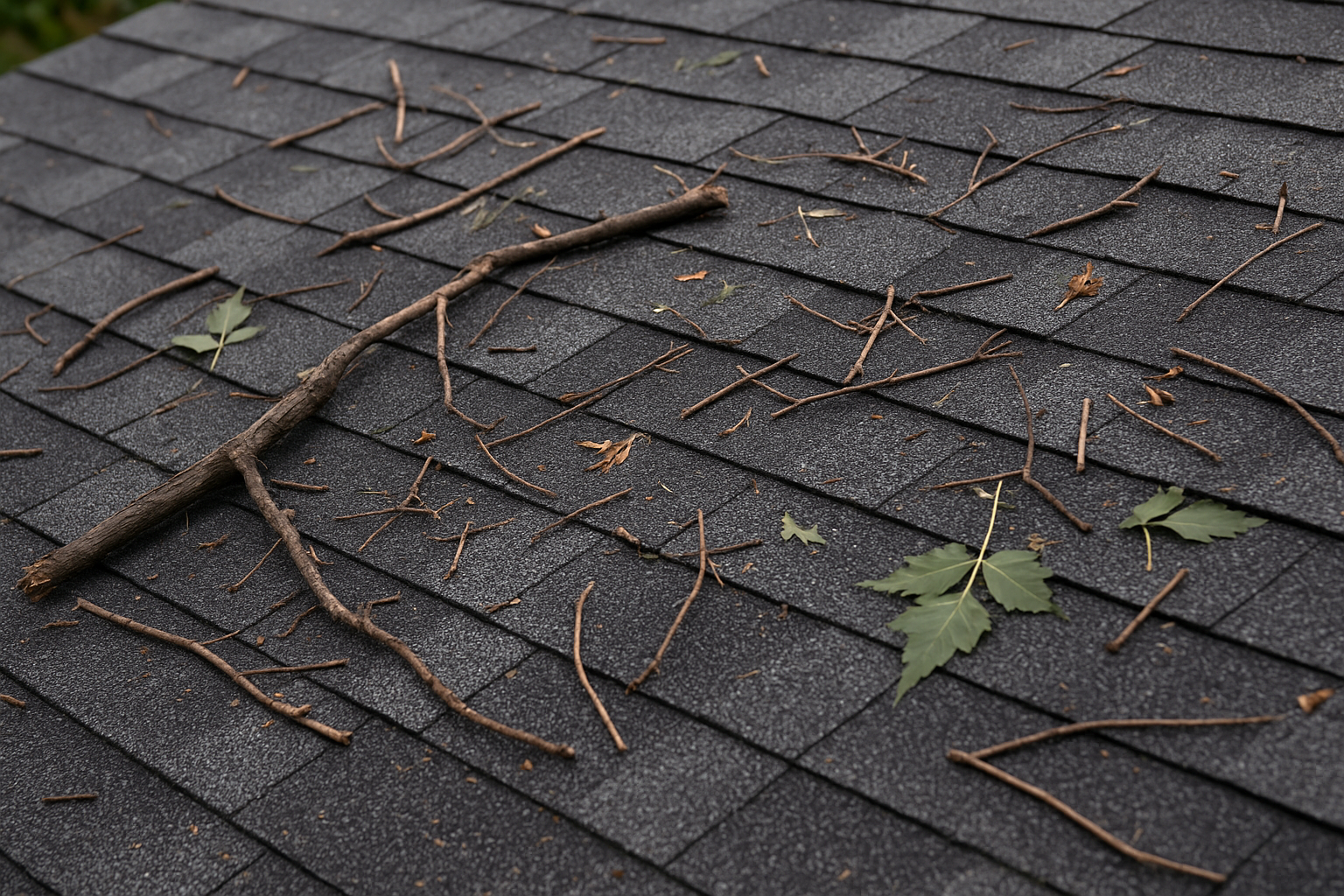
Start With Safety
Wait for the all-clear and check your surroundings. Stay far from downed lines. If you smell gas or see structural damage, step back and call the utility or 911. Put on boots, gloves, eye protection, and a mask if you’re handling dusty or moldy debris.
Document First, Then Triage
Before moving anything, take photos and short video clips from multiple angles. Capture roof, siding, damaged gutters, windows, and the yard. Bag small debris, but save anything that shows damage. Temporary covers are fine to stop a leak. If the damage to your roof or gutters requires a replacement, call for a free quote.
Ground-First Roof Checks
Start from the ground with binoculars. Look for missing shingles, lifted edges, torn flashing, and clogged valleys. Note dents on Metal roofing and granule piles from Asphalt roofing. If you’re unsure about what you see, schedule a professional Roofing contractor services visit.
Safe Ladder And Gutter Work
Only climb if the roof is dry and the wind is calm. Set a sturdy ladder on level ground. Keep three points of contact and have a helper hold the rails. Work in small sections. Scoop leaves and twigs from gutters into a bucket, then flush downspouts with a garden hose. Move the ladder often. Don’t overreach. If you find heavy blockages or loose sections, note them for repair and step down.
Clearing Roof Debris Without Damage
Use a telescoping rake or soft brush from the ladder to pull light debris down the slope. Avoid pressure washing. Dragging branches across shingles can tear surfaces, so lift with a partner once it’s safe to do so. On low-slope areas, open drains and scuppers first to relieve standing water. Keep your footing dry. If a large limb is resting on the roof, stop. That’s a job for a pro.
Trees, Power, And Big Hazards
Skip chainsaw work on a ladder or roof. Tensioned limbs can snap back. Keep others clear of the work zone. If a tree touches any line, treat it as energized and call the utility.
When to Call Us
If you have significant storm damage, missing shingles, or notice a new leak, give us a call. We can evaluate what a full roof replacement would cost. In our experience, a replacement is often a better choice than patchwork repairs. A new roof gives you lasting protection, better energy efficiency, and a stronger warranty. Repairs may only cover the surface problem and can leave hidden damage behind, leading to more issues later. With a replacement, you start fresh with a roof built to handle future storms.
